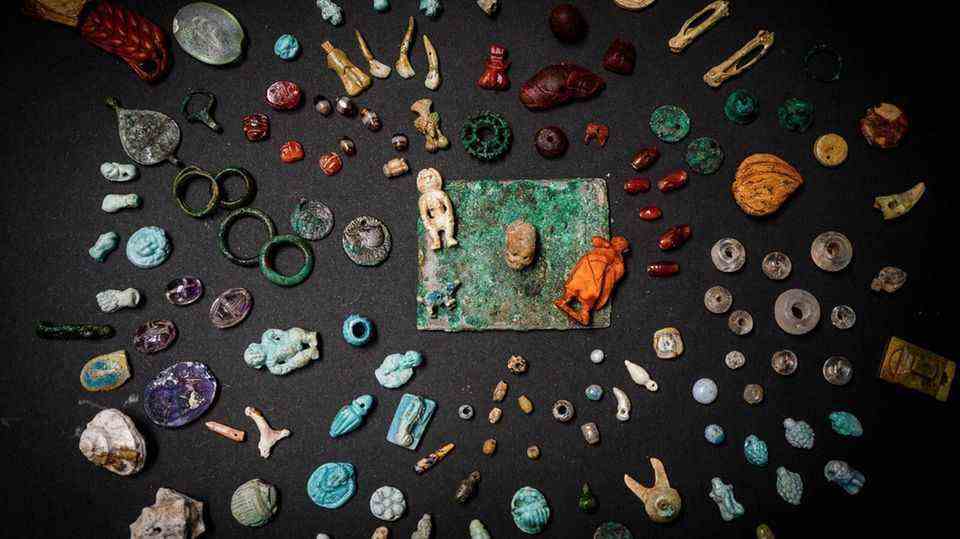antiquity
Roman Empire – the arch that ruled the world
The Pont du Gard was part of an aqueduct about 50 km long.
© Realpicture / Getty Images
The Roman world empire was based on the power of the legions and an unprecedented infrastructure. Roads, bridges and the famous aqueducts were built on an inconspicuous invention: the arch.
The ancient Greeks can be characterized as philosophers and artists. From this perspective, the Romans would be technocrats and engineers. Their artistic statues stand in the tradition of the Greek models until late antiquity. But the most famous architect of antiquity, Vitruvius, was Roman. In terms of architecture and construction, the Romans eclipsed everything that had come before. And not necessarily in the field of temples and other ostentatious buildings, but in such useful things as building bridges and the famous water pipes.
Arch carries heavy loads
The quantum leap in building history was made possible by a rather inconspicuous innovation that the Romans adopted from the Etruscans. The round arch revolutionized architecture. It made it possible to bridge high rooms and wide spans. In other words, an arch can carry a far greater load than a straight lintel or its predecessor, the false arch or corbel arch. Only by building with arches were bridges that crossed rivers or bridged a road possible. The Roman aqueducts, the viaducts, would be inconceivable without the arch construction.
The arch was the basic structural unit of Roman architects. Simple arches can be expanded into tunnels, domes, and arcades. The Romans used this basic idea for spectacular constructions that could only be built again in the 20th century. With vaults based on the arch principle, the Romans created basements of facilities that were far larger than a soccer field. And even the mighty dome of Hagia Sophia rested on mighty arches.
load is diverted
What was the revolution? The building materials of the time, stone and concrete, could withstand great pressure, but unlike a steel bridge, they could not withstand tensile forces for long. Today, a concrete roadway is reinforced with steel in such a way that this bridge can float. The Romans did not have the opportunity to work with steel in this way. But they knew the bow and it made sure that the entire tensile load was converted into a compressive load. From the keystone at the top of the arch, the stress was consistently deflected downward and outward. During construction, a temporary wooden arch is first erected to support the stones. Only when the central keystone was laid could this wooden support be removed. The weight of the stones themselves then holds the bow. With larger arches and heavy materials such as concrete, a wooden scaffolding could no longer bear the load, so a counter-form made of stone was built up first, which was removed again after completion. However, every arch also pushes outwards. This pressure resulted in Roman buildings having outer walls that became very thick towards the bottom.
Better stable than airy
The whole thing only worked up to a certain span, and the bow could not be laid out too flat. The Roman Pantheon is considered the largest possible construction based on this technique. The rotunda measures 150 Roman feet or 43.30 meters. However, most of the arches were significantly smaller, and their theoretical resilience was far greater than the loads they were actually exposed to. This also showed the practical sense of the Romans, who preferred to stay on the safe side when building. For religious reasons, the Gothic cathedrals of the Middle Ages were supposed to grow as tall as possible. And sometimes you went beyond the limits of physics. The Romans traded thick walls with small openings for stability.
Built to last
From the point of view of descendants, the greatest advantage of Roman construction is that the buildings were made to last forever. If a Roman bow has not been subjected to severe stretching, it will not age or fatigue. The structure itself will last as long as the bricks from which it is made. And the material was extremely durable, because the Romans used a special kind of concrete. While it was weaker than today’s mixes, the Romans added volcanic ash, making their concrete resistant to weathering. Their buildings are still standing today, if they have not been destroyed by human hands.
Also read:
– Mansion of the Praetorian Guard found during subway construction – the ancient Romans lived so luxuriously
– 300 gold coins in an amphora. Were they hidden from marauding Germans?
– Evaporating blood and exploding skulls – that’s how cruel the victims of Mount Vesuvius died
– Skulls and Love Spells – magical tools discovered by a sorceress from Pompeii



